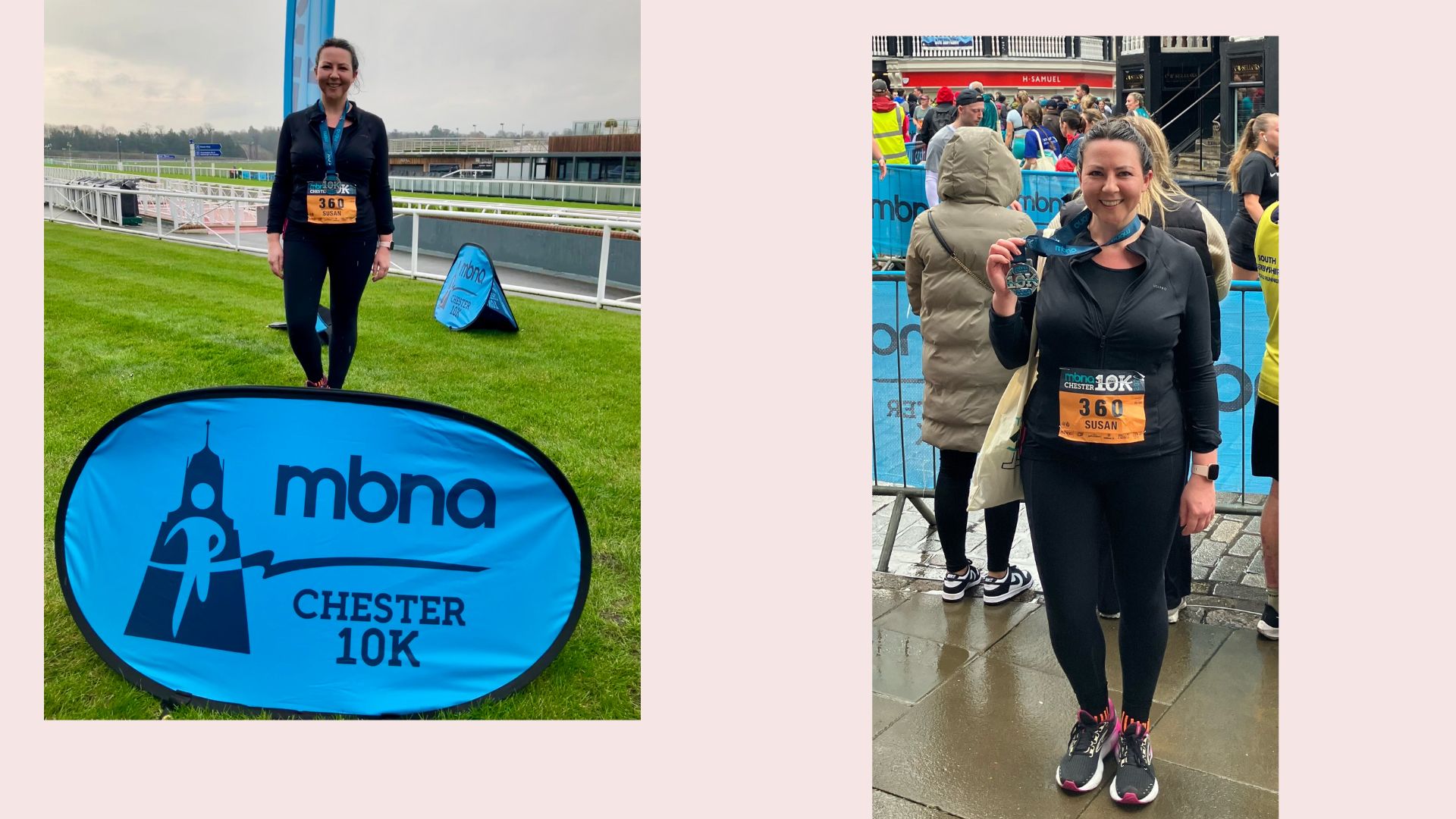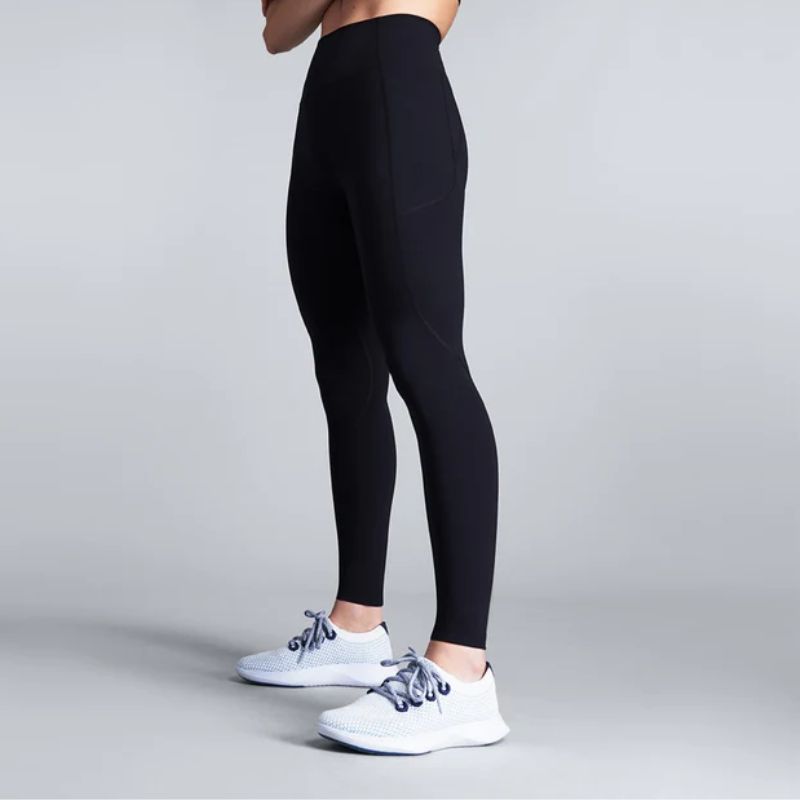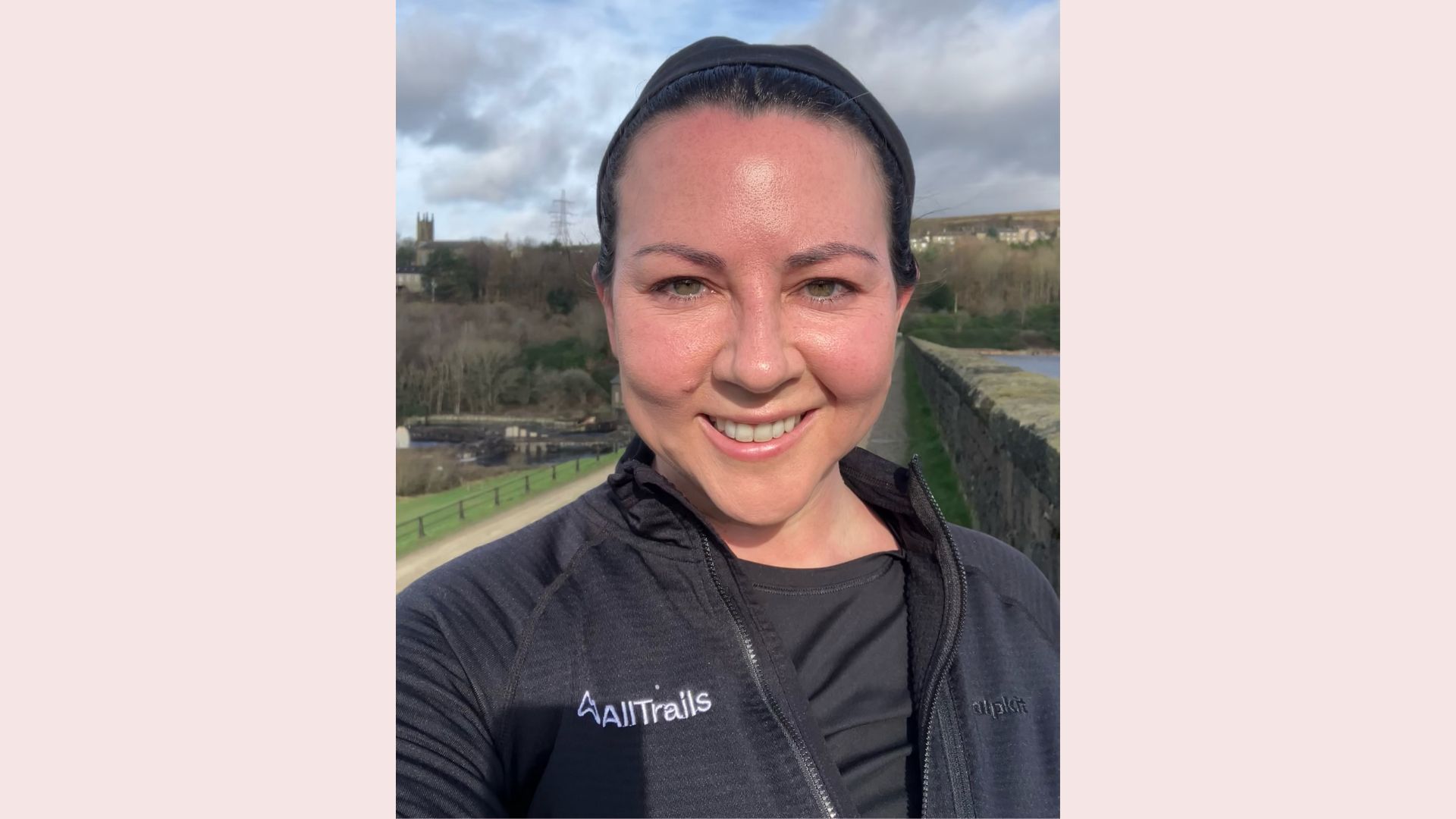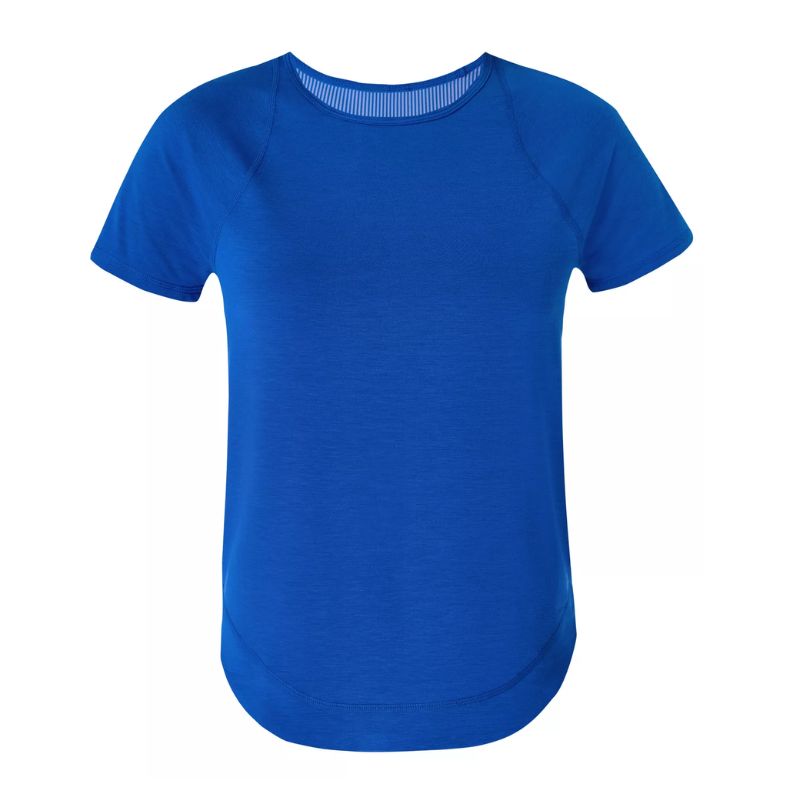I ran 10km for the first time in 20 years - here's how I trained for it from scratch
Susan Griffin took up learning how to run 10km improve her fitness and get outside her comfort zone this year. Here's how she did it from start to finish line


Having not run a race in almost 20 years, writer Susan Griffin decided to shake off the negative self-talk and train for a 10km race. This is what she learnt along the way.
I am standing in the rain in my pair of best running shoes, anxiously hopping from one foot to the other in anticipation for the start of my first 10km race. The air is filled with excited chatter as people jostle for space on the start line while race organisers shout words of encouragement over the loudspeaker. I feel slightly nauseous, but there is only so long to ponder my predicament before the sound of the horn blares, and we are off.
An hour and six minutes later, I cross the finish line out of breath and red-faced, but thrilled to have completed the course. I never thought I’d be running again, let alone embarking on a 10km race in my 40s - but then it is easy to write yourself off as age creeps up and doubt kicks in.
I was a sporty in my teens and in 2006, I ran the London Marathon with the conviction of a 20-something. But somewhere along the line, my self-confidence began to wane. Like so many women, I began to question myself and my capabilities. But last year, I visited a longevity clinic to get my posture examined. The enduring advice was the importance of moving our bodies in as many different ways as we can, especially as we get older. It was the wake-up call I needed, so I decided to flip the negative self-talk and do something tangible, which is why I signed up to do the MBNA Chester 10km race and learn how to start running as a beginner once again.
How to run 10km from scratch
1. Signed up to the Runna app
As someone new to running, I knew I'd need professional guidance. So, I signed up to the Runna app before I did anything else. As one of the best running apps overall, it offered be a personalised running plan suited to my fitness goals in just minutes.
I couldn't imagine running 5km in less than 45 minutes, so I started with the Couch to 5k plan - an eight-week plan incorporating a series of walk-runs that allow time for the body to adapt to running. Once that was once, I moved onto a multi-week 10km plan, slowly extending the length of my runs.

Runna is an app, available to download on your smartphone, that offers personalised running plans for you - whatever your current fitness level and distance you have in mind. Decide how often you want to run and you'll be given a plan of up to 12 weeks with various different types of run to help you meet your goals. £15.99 per month or £99.99 per year.
I would love to tell you I regimentally followed all advice, on the app and online, but I didn’t. In fact, once I had got the initial few run-walks out the way, literally beginning with 30-second runs, 90-second walks and so on, I very much did it my own way.
Sign up to our free daily email for the latest royal and entertainment news, interesting opinion, expert advice on styling and beauty trends, and no-nonsense guides to the health and wellness questions you want answered.
But as Dr Eric Millstein, an LA-based board-certified orthopedic surgeon, says: "I am a big believer in finding what works best for each individual runner. Speeds and distances can be modified overtime to meet individual needs."
While I found it helpful to watch the Runna videos on technique, warm-up and cool down, I treated the plans as guidance as to when I should be hitting certain distances, rather than follow it religiously, but this is entirely personal preference.
My aim was to complete the race, not make a particular time, so I found circular routes I enjoyed, which I continued to walk-run two to three times a week. I measured my progress via the Strava app and my pick of the best Fitbits, checking how long it took me to cover the same distance each time. I couldn’t say I experienced ‘the runner’s high’ at any point, but as I continued to plod, my pace began to improve and with that my confidence grew. With a couple of weeks to go before the race, I was completing 10km routes.
2. Invested in the right kit
Investing in a pair of good running trainers, as opposed to what is on trend or convenient, is a must. I headed to Runners Need to analyse my gait, which involved running on a treadmill for 30 seconds while an in-store expert looked at my running style.
"From here, we can assess how much you pronate (the extend to which your foot naturally rolls when you run) and where the foot strikes the ground. A running shoe is then recommended based on foot shape, terrain, level of pronation, and personal preference," says John Jennings, a footwear buyer at Runners Need. I was recommended Brooks Glycerin 20 and Asics Gel Nimbus, but your feet will tell a different tale, and I also picked up a few pairs of running socks while I was there.
Likewise, one of the best sports bras is a must-have for runners. Unlike running trainers, we can be reticent about splashing out on a good high-impact sports bra, but it is necessary for comfort and performance, so don’t scrimp.
"We recommend looking for something that offers high-impact support. These tend to have been officially bounce tested and will be bra-sized instead of small, medium or large,” says Jess Grace from Boobydoo, an online sports bra company that offers free virtual fittings and sells many of the best high-impact sports bras.
"Most of the support in a bra comes from the band, so it’s important that this feels firm but not too tight, she says. "You should look for full coverage cups that fully encase and protect your breasts too." On their advice, I went with the Shock Absorber Ultimate Run Bra, which has a racer back that clips together. It has been a revelation.
And of course, you can't forget the rest of your running kit. "Select sweat-wicking, quick-drying, and breathable kit to help keep you cool and running comfortably," advises Rebecca Carroll, Product Buyer at Runners Need. "Look for mesh ventilation panels for airflow, seamless construction to avoid nasty rubbing, and UV protection to shield your skin from the sun's harmful rays."
But she warns: "Steer clear of anything cotton. It traps heat, soaks up sweat and keeps moisture against your skin, increasing your chance of chafing."
A pair of the best gym leggings with pockets (if you're not into the idea of a running vest or belt) is also a good idea I learnt, otherwise, you'll find yourself running around clasping your phone and keys. My go-tos are the LNDR Fatal Attraction, which I wore on race day, and NB Sleek Pocket High Rise Leggings. But take the time to find a pair of the best workout leggings or best running shorts, if you prefer a shorter fit, that suit you so you'll run with confidence.

My favourite pair of black leggings is the LNDR Fatal Attraction leggings, which I wore on race day. They are soft, comfortable, and have a firm fit, with two pockets in the hips for storing essentials.
3. Made sure to warm up and cool down pre- and post-race
If you're out of the house before you've had a chance to stretch out - don't be too embarrassed to warm-up properly before the beginning of every run and on the morning of your race. You might feel silly, but trust me, it's worth it.
Warming up (and cooling down with stretches post-run) is essential for easing movement and helping to prevent injury.
Not sure where to start? One of the best stretching apps can take you through a routine for runners step-by-step.
4. Cross-training
I love hiking, so I was keen not to stop doing this. I also got back into the pool and took up strength training classes again, both of which helped to expand my workout program to include some cross training, which the experts recommend.
"Incorporating cycling, yoga, or swimming, one to two times a week enhances cardiovascular fitness, muscle strength, and flexibility, without excessive impact on the joints," says Joshua Bartlett, running coach and founder of Your Next Run.
Running puts quite a load on the knee, hip, and ankle joints so complementing running with lower-impact cardio exercise also makes the whole process feel more enjoyable as the distance picks up.

Other forms of training, such as hiking, cycling, and swimming can improve your cardiovascular fitness without the load.
5. Distracted myself when motivation was low
A word of warning - nothing will feel quite as uncomfortable as heading out for your first run and mustering the motivation to move from a walking to running motion. That voice in your head will tell you to give up in less than a minute. Be prepared that the same voice will pipe up throughout training, and even by 3km on race day.
"That voice in your head loves you and ideally it wants you to find your comfort zone and stay there, so it will give you all sorts of unhelpful messages to put you off pushing yourself and trying to do this difficult thing,” says Dr Perry.
"If you name the voice, you can start to realise it is only giving you thoughts, not facts, and you can distance your ambitions and goals from the thoughts it's giving you. This distance means you can start to change the conversation in your head to focus more on what you can do, rather than on what you are scared you can’t."
Understand why you are training and remind yourself of that when you don’t want to head out the door. To distract myself from the sound of this voice in my head, plodding feet, and heavy breathing, I listened to podasts, audiobooks, and music with headphones. I also played games in my head.
6. Took the pressure off
At the end of the day, you are literally running your own race. Once I reminded myself of this during my training runs and on race day, I felt so much better. I took the training slowly and just kept plugging away.
I found following the Runna plan to be beneficial - but I didn't obsess over it and push myself unnecessarily. I made sure to listen to my body before and during my runs, and if I felt like I needed to walk, I did so. Just keep moving, I told myself. I focused on getting my breath back and didn't berate myself if things weren't quite going to plan.
But most of all, I enjoyed the big day. The challenges became a distant memory when I collected my medal - which is why I am here now, contemplating my next race. It might even be a half marathon.
Taking the pressure off won't make you mentally feel better about running - it's essential for new runners, says Dr Jordan Placella, a personal trainer and the founder of Hitting Stride Physical Therapy. "Studies show that most running injuries stem from training mistakes, such as overdoing distance or rapid changes in intensity."
And if you need inspiration from other new runners, use Instagram to your advantage. Follow fellow 'real' runners online via hashtags like #slowrunner, #slowrunclub and #runforfun.
How long does it take to train for a 10km race?
The exact timeframe varies based on fitness level, consistency in training, and the specific goals you want to achieve - whether that's simply finishing the race or aiming for a specific time, Bartlett says. "Generally-speaking, as a beginner you will be looking to train three to four times a week for about eight to 12 weeks," he says. "This allows for rest days and a gradual increase in distance (via run-walks) to build endurance safely and effectively."
Weekly sessions should be a mixture of 80/20 running, he notes. "You should include a variety of workouts, such as long runs, easy runs, and intervals or tempo runs. You can train on a treadmill, which allows for precise pacing and consistent training, but it lacks the varied elements of race day, so you should incorporate outdoor runs too." For example, you might like to start your training by doing Couch to 5k on a treadmill before moving outside to train for your first 10km.
Why train for a race?
Signing up to do a race might feel intimidating, but there is method to the madness. "We can often get excited about a health kick but the excitement fades when we realise the efforts and discomfort involved. As a habit takes 66 days on average to develop, we need some kind of external motivation, like a goal or race we are daunted by, to keep us going until the exercise becomes habit," says sport psychologist Dr Josephine Perry, author of The Ten Pillars of Success.
Booking the race helped my focus and encouraged me to run when I didn't feel like it. It also helped my structure my training, which did feel hard-going most of the time, I'll be honest. Sure, there will be moaning and muscle ache, as well as mud, sweat and tears if you do decide to take up a challenge like this, but if you just keep going, keep putting one step in front of the other, you do get there, I promise.
Best 10km races to book in 2024
- The London 10k: Fancy a 10km run on closed roads past major central London sights like Westminster Bridge, The London Eye, Regent Street, Piccadilly Circus and Big Ben? With plenty of time to get training before the big day, the London 10k on 14 July 2024 could be for you - and you won't need to plug in your headphones to stay motivated here, with live bands, DJs, and cheering fans to get you across the finish line.
- London Duathlon: If you love doing cycling as a workout already, consider the London Duathlon. If you choose the Half Duathlon option, you'll run a total of 10km through leafy Richmond Park as summer draws to a close on 8 September 2024.
- AJ Bell Great North Run: Taking place in Newcastle on July 7 2024, this 10km route offers the best of the city, from river views to incredible architecture.
- Great Bristol Run: On May 19, runners ready to race in Bristol can take advantage of this great 10km path along the harbour and Avon Gorge, and across Clifton Suspension Bridge. But best be quick - this race is set to sell out soon!
- Swansea Bay 10k: You'll have plenty of time to train for the Swansea 10k as it takes place in September this year. With a route sweeping across Swansea Bay, you'll have plenty of sights to look forward to as well.
- Great Scottish Run: On October 6, this much-loved race comes back to Glasgow. Views include the The Hydro, Pacific Quay, and the McLennan Arch, with plenty of sideline support and beverage options post-race.
A journalist with two decades of experience, Susan interviewed A-list names in film and TV before going freelance and focusing on health, wellbeing, and lifestyle features. She has since spoken to world-renowned experts on the most innovative and effective ways to look after your mind and body; her work appearing in publications such as Daily Express, Daily Mirror, Metro, Fabulous and The Telegraph. When Susan isn’t working on her laptop, she is most content hiking in the Peak District or finding quiet camping spots to while away a weekend and knows first-hand the restorative benefits of being outdoors.


